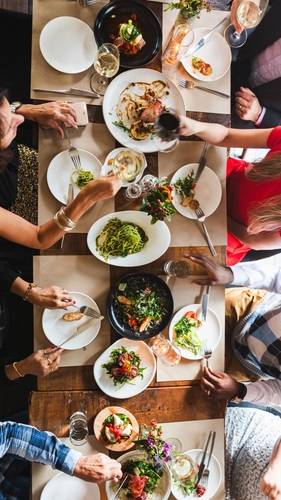Genetics 101
Welcome to genetics 101!
If you’ve ever wondered why your body reacts the way it does to certain foods, this is the place to start. Your DNA holds powerful insights into how your body functions and how you can fuel it better.
In this short guide, we’ll walk through the basics of genetics so you feel ready to understand the science behind your personalized nutrition report.
Let’s unlock the next piece of your wellness journey.
What you already know—and what you might not
You’ve heard of DNA. You probably remember genes from high school science. And yes, they help determine things like your eye color and height.
But your genes also influence how your body responds to food. From how you break down carbs and fats to how you absorb nutrients, your DNA shapes your unique nutritional needs.
This is where science meets real life—and where GenoPalate helps you make choices that truly fit you.
What are chromosomes and genes?
Every person inherits 46 chromosomes—23 from each parent. These chromosomes are made of tightly coiled DNA, which carries the instructions for how your body looks, feels, and functions.
Within your DNA are genes, made up of four basic molecules:
Adenine (A), Thymine (T), Cytosine (C), and Guanine (G).
These molecules are like letters in a long instruction manual. When arranged in a specific order, they create genes that tell your body how to make proteins—the workers behind everything your body does.
These chromosomes are made up of DNA that is tightly wound around proteins called histones. All of your cells have all 46 chromosomes; the only exceptions are your reproductive cells which have 23 each.
Proteins: your body's workhorses
Proteins are involved in nearly every part of your body. They help build and repair tissues, make hormones and enzymes, and support your immune system.
They also affect how your body digests food and uses nutrients.
Because every person has slightly different gene sequences, the proteins your body makes may work a little differently than someone else’s. These differences are called genetic variants.
How you're different from everyone else
Your genetic variants help explain why one diet works for your friend, but not for you. Even small differences in DNA can lead to big changes in how your body processes food.
Here’s an example:
A variant in the FTO gene can influence how your body metabolizes fat. People with the TT genotype may be more efficient at burning fat than those with the AT genotype.
Here's another example:
A variant in the IRS1 gene affects how the body handles carbohydrates. People with the CC genotype tend to have better insulin response and a lower body mass index when eating more carbs. That means a low-carb diet might actually work against their biology—even if it helped someone else.
Why one-size-fits-all nutrition doesn’t work
Your genes are yours alone. That’s why generic advice—like “cut carbs” or “eat low-fat”—doesn’t always deliver results.
GenoPalate exists to change that. We help you tune out the noise and tune in to what your body needs. With your DNA as the starting point, we reveal which foods fit your biology so you can eat with confidence, not confusion.
Your DNA is the start of something powerful
Your body is built with purpose and potential, and your genes offer the roadmap.
Understanding your DNA is more than just cool science—it’s a tool to help you feel better, eat better, and live better. We’re here to be the missing piece that brings it all together.
Get ready to unlock your personalized recommendations. They’re designed with one thing in mind: you.







